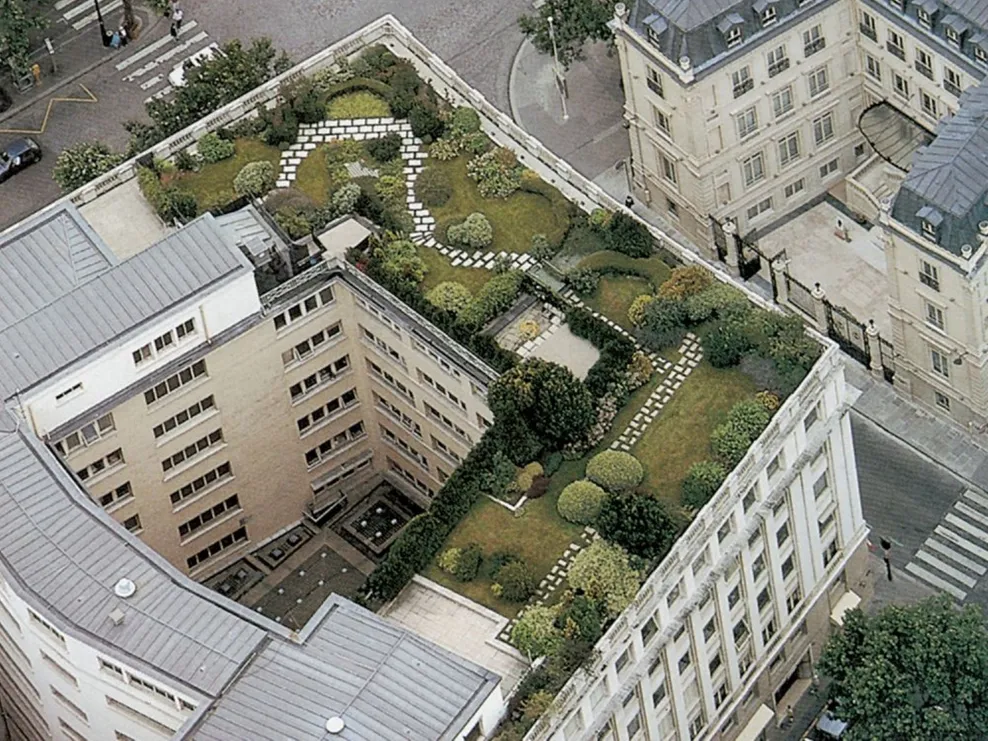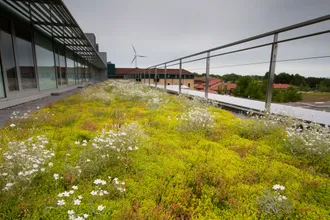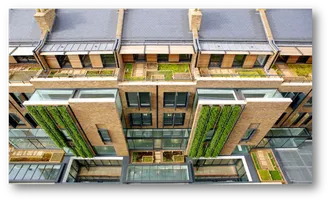Our country pages
Europe
Search
Top 5 benefits of Green Roofs

A brief Background of Green Roofing
Green roofs have ‘been around’ for centuries, with the ancient Babylonian civilisation sporting the hanging gardens of Babylon, one of the seven wonders of the ancient world.
Human technology began to advance and with it, innovations in roofing occurred. Despite this, some regions retained the use of vegetation in their roofs. Scandinavia, for example, used birch bark sod roofs as a form of green roofing for generations.
Modern green roofs were developed in the 1960s to try and reduce water runoff problems associated with traditional flat or low pitch roofs. Adding a green roof and vegetation to a membrane absorbs water and slows run-off, but also provides a myriad of benefits. The green roofs of 2020 blend high-performance technology with natural vegetation, creating ‘green’ spaces that encourage biodiversity, reduce energy costs and most importantly, contribute positively to a more sustainable environment.
If you’re interested in specifying a green roof or just learning more about green roofing systems, get in touch with us today
Active Roofs
Top 5 benefits of Green Roofs
Reducing Stormwater Runoff
A properly installed green roof helps control stormwater run-off, which is an issue facing many towns and cities across the UK and Ireland at the moment. As more urban development occurs, more ground surface becomes sealed and therefore, water cannot be lost through permeation. A green roof reduces peak flow rates and total runoff volume
Reduced Energy Use
It’s always a benefit for the end-user when you can offer energy savings in your design. A green roof improves a building’s thermal efficiency and can reduce the loss of heat. With a green roof both air conditioning and heating requirements are decreased. A study by Trent University even found that in British weather, a planted green roof has lower temperatures through the roof layers when compared to unplanted ones.
Reduced Impact on Climate Change
Much of the emissions from buildings come from heating and cooling the structure. A green roof helps provide a cost-effective, future-proofed solution to help bring the emissions of a building down by improving the local microclimate, providing additional insulation to the roof system and the natural process that the green roof plants provide by converting CO2 through photosynthesis.
Increased Biodiversity
In addition to aiding the reduction of CO2, green roofs also form a new potential wildlife habitat and can encourage the growth of new flora and fauna. The more urbanisation that occurs, the greater the need for biodiversity in new spaces that aren’t at ground-level. Green roofs can be used specifically to create habitats for endangered species. Some species such as Lapwings, Skylark and the Common Tern all thrive in green roof habitats.
Accessible Recreation Areas
In many urban environments, the lack of outdoor space can negatively impact building occupants. A trafficable surface combined with a green roof can create a wonderful green space for people to enjoy, as well as extending the lifespan of the roof as the green roof protects materials from harmful ultraviolet radiation and extreme temperatures.

